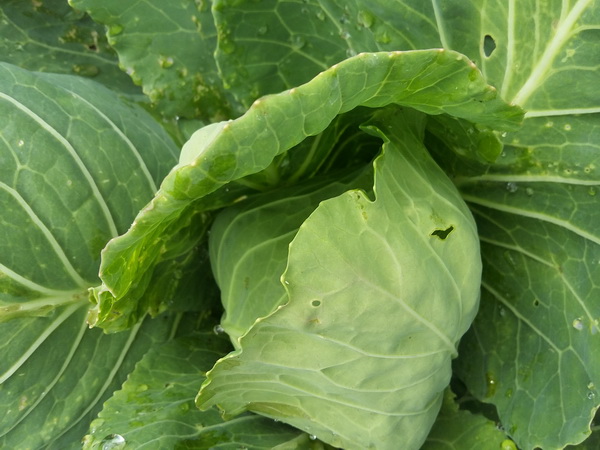
Growing cabbage as a whole is not difficult, but sometimes it’s a nuisance when white cabbage does not form a head or forms a lot of defective head-heads. Having determined the reasons in time for the disaster in time, the situation can be rectified quickly enough.
Content
Causes
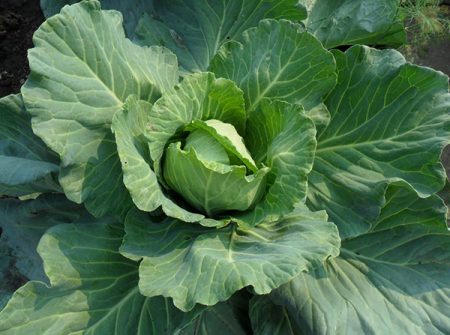
There are several reasons for the lack of formation of cabbage heads when grown in open ground. The following factors can lead to crop loss.
Poor seeds and seedlings
Seeds should be bought only at specialized points or proven distributors. Even the most beautiful packages cannot guarantee that they will have a quality product. You can purchase seeds from unscrupulous sellers that were collected from cabbage hybrids or crossed with wild colza. High-quality heads will never be formed from such seed material.
This factor also applies to the purchase of young seedlings. Such seedlings are grown by unscrupulous greenhouses for sale.
Insufficient lighting
Being a culture that does not tolerate shading and requires lighting for 15-16 hours, cabbage does not form a head when growing it even in partial shade. In the case of planting a vegetable in the shade, partial shade, or in conditions of thickened planting, the plant will spend all its strength on stretching to the light without tying a head of cabbage. With thickened plantings, cabbage should be planted so that between the plants there is a distance of 50 to 60 cm.
Tall crops that grow close to the vegetable and block sunlight at some point in the day will also contribute to the lack of head formation. Tall plants can be planted next to the vegetable only on the north side at a distance of at least 70 cm from the vegetable.
Insufficient or excessive soil moisture
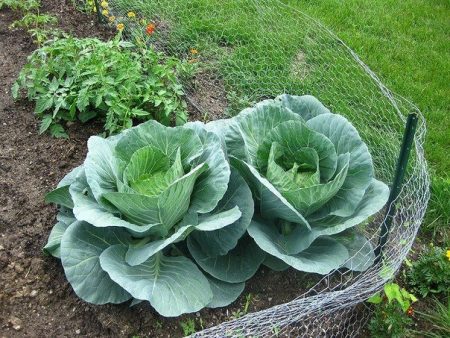
With a lack of moisture in the soil, the plant cannot develop normally, form a good head of cabbage. However, if the soil is supersaturated with moisture, then the cabbage begins to more actively absorb nitrogen from it. This element contributes to the growth of vegetative mass at the expense of heading.
Micronutrient deficiency and potassium
Cabbage is a vegetable that is demanding on top dressing with phosphorus, potassium, and trace elements. Without these chemical components in the soil, the head will not form. However, it is important not to overfeed the culture, since it is possible to cause a chemical burn of the vegetative mass, as a result of which the head of cabbage will slow down. The vegetable especially needs potassium, which is necessary for the development of the root system and the formation of the head.
Pathogens and pests
Pathogens and sucking pests with an untimely fight against them, weaken the culture. As a result, the plant cannot actively develop and does not head out.
Important!
In order to protect the cabbage from the attack of diseases and pests, you should soak the roots of seedlings before planting in the soil with the drug "Prestige".
Signs that the cabbage head will not form
Growing cabbage on its plot, an experienced gardener will immediately identify a plant that cannot form a head by signs:
- a weakened sluggish plant is susceptible to attack by pathogens or a lack of trace elements;
- a vegetable with a good leaf apparatus does not tie head out - a sign of a lack of potassium and boron in the soil;
- the plant with the upper part of the leaf plate eaten does not head out - a sign of the cruciferous flea invasion;
- a powerful plant with "overwhelming health" vegetative mass is a consequence of an excess of nitrogen in the soil.
How to feed cabbage for ovary
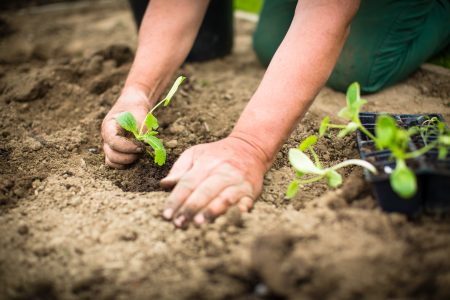
Fertilizing the crop with mineral fertilizers is very important. After all, with the help of some chemical elements it is possible not only to help the cabbage to head out, but also to improve the quality and timing of the harvest.
Feeding seedlings
The initial top dressing of a plant for the qualitative formation of a head of cabbage is carried out in the seedling stage when a second or third pair of true leaves is formed on the plant.
Cooking:
- pour in a container of 8 liters of warm water;
- add 15 g of superphosphate, 15 g of potassium, 20 g of urea;
- stir the solution, insist for two days;
- after insisting 0, 5 of the finished concentrate, dilute 9 l of water;
- pour 300 ml of liquid under each cabbage seedling root.
Feeding with boric acid and molybdenum
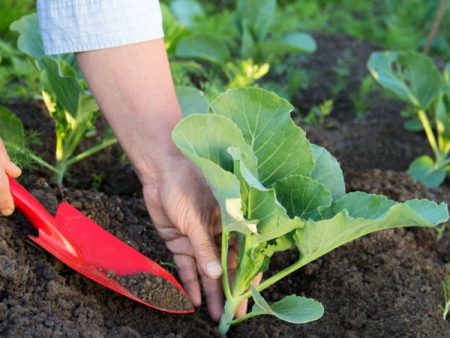
The signs of the lack of these elements in the soil under the cabbage will be the appearance of ugly leaves and the death of only the formed head of cabbage. If molybdenum is not enough in the soil, the head will not form a plant. The culture is treated with a solution at the beginning of head formation.
Cooking
- pour water into a container of 10 l;
- add 15 g of boric acid, 15 ammonium molybdenum acid, 1 g of potassium permanganate, 10 g of zinc sulfate;
- carry out foliar top dressing, pouring under each plant 0.5 l of the finished solution.
Dressing for weak cabbage
If the plants look weakened and the fruits are small, double-root treatment of cabbage should be done twice. The first spraying is carried out after survival of seedlings, the second at the beginning of heading formation.
Cooking
- pour water into a container of 8 liters;
- add 1 tablespoon of calcium nitrate, 1 cup of wood ash, growth stimulator "Epin";
- insist the solution during the day, drain;
- carry out foliar top dressing with concentrate using a spray gun.
Important!
When combating diseases and pests of cabbage with insecticides and fungicides, add Epin or Zircon to the prepared solution. By destroying the pest concentrate, growth stimulants will contribute to the quickest restoration of the culture and the formation of the ovary.
Prevention methods
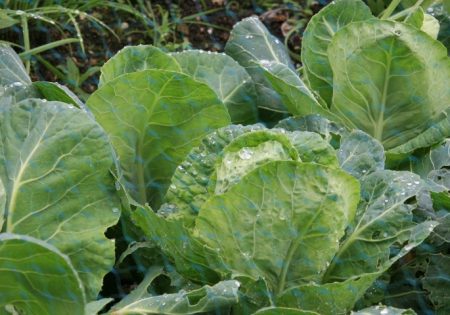
To carry out preventive measures against the lack of a good tie head, events begin to be carried out from the end of autumn. For this:
- in the area where cabbage will be grown in the next season, one square meter is added for digging: 20 g of superphosphate, 25 g of potassium, 20 g of nitrate;
- when planting seedlings of cabbage, keep a distance between plants of at least 45 cm;
- prevent the vegetable from growing in partial shade or with closely planted tall plants;
- conduct timely watering and loosening of soil under cabbage;
- carry out preventive treatment with fungicides and insecticides.
Advice
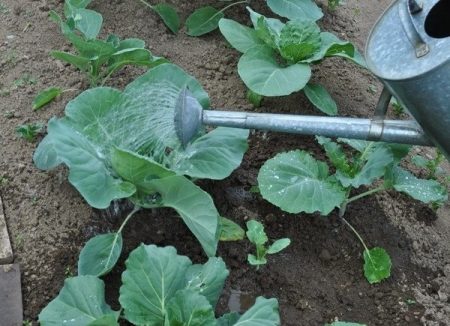
Adhering to the tips and advice on growing vegetables, you can achieve not only a good head formation, but also a decent harvest of cabbage.
- When planting cabbage seedlings, add 15 g of superphosphate, urea, potassium chloride to each planting hole.
- Beginning in mid-July, stop nitrogen-containing fertilizing, as this substance will only contribute to the growth of foliage, inhibiting the formation of the head.
- In rainy summer, part of the lower leaves of cabbage should be cut off. This method will contribute to good air circulation in the root zone of the plant, will help the formation of the fetus.
Reviews
Gardeners who carried out treatments to improve the ovary of cabbages share their impressions:
Andrey Pereslavl-Zalessky
I have been doing cabbage cultivation for several years. However, it was not possible to get a decent crop, since the heads of the planted plants were not tied at all. I learned about the method of processing a vegetable when pouring head with ordinary potassium. I decided to try it. I fed the solution on a sheet. Almost all cabbage formed heads, only on two plants there was no ovary. But this is the result!
Anna, Yaroslavl
This year my husband and I broke our own well and decided to plant the whole garden with early cabbage. Watering during watering did not spare - its seedlings drank plenty. However, in early June, when the heads were already to be tied, we were completely disappointed. Instead of heads of cabbage, almost every plant had one foliage. Our neighbor, an agronomist, visiting our beds, said that everything was due to excessive watering. She advised breaking off part of the lower leaves, and treat the cabbage with potassium with a growth stimulator. After listening to her, we saved the harvest, which, however, due to our oversight, ripened two weeks later.
Any gardener will be offended if, with good care, the heads are not tied. Therefore, it is important to deal with the main causes of this phenomenon and eliminate them in a timely manner.

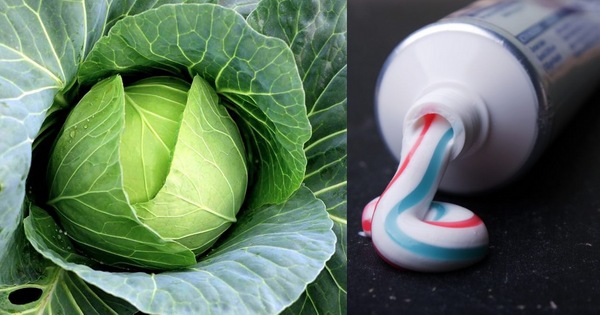
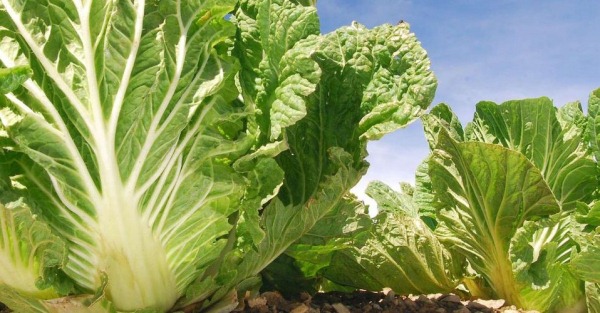
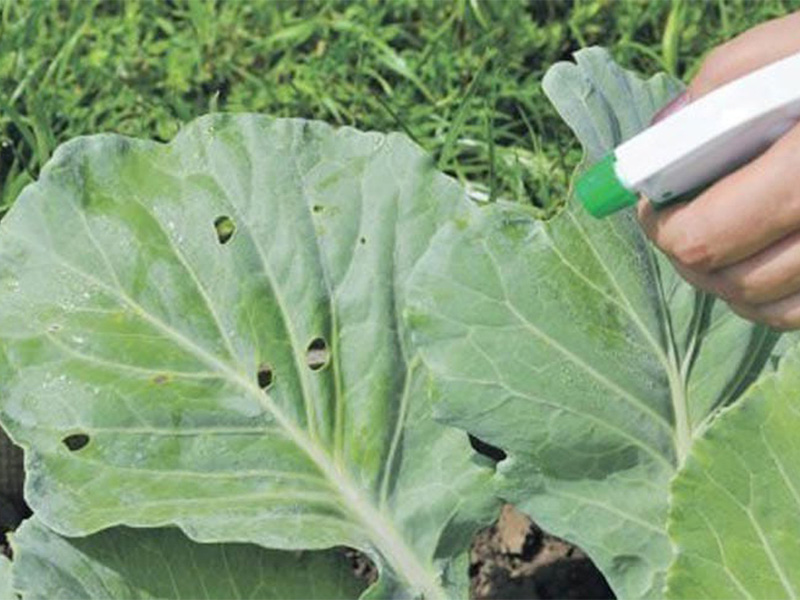
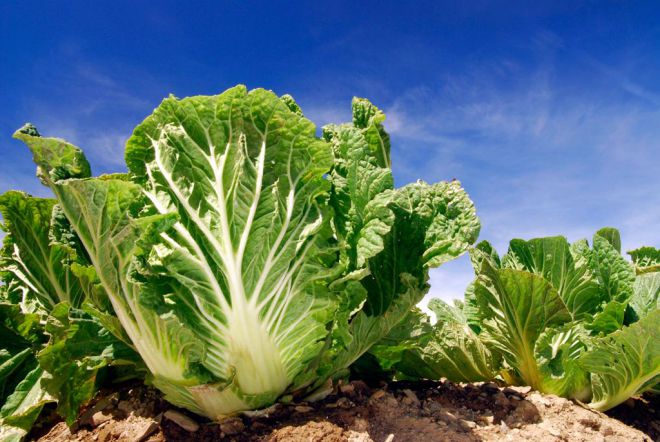 How to grow Chinese cabbage on your site?
How to grow Chinese cabbage on your site?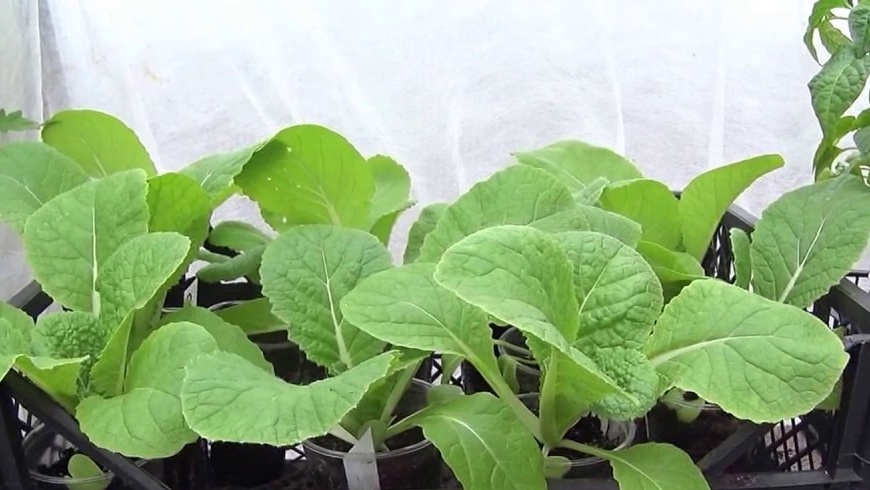 When to plant Chinese cabbage on seedlings in 2024
When to plant Chinese cabbage on seedlings in 2024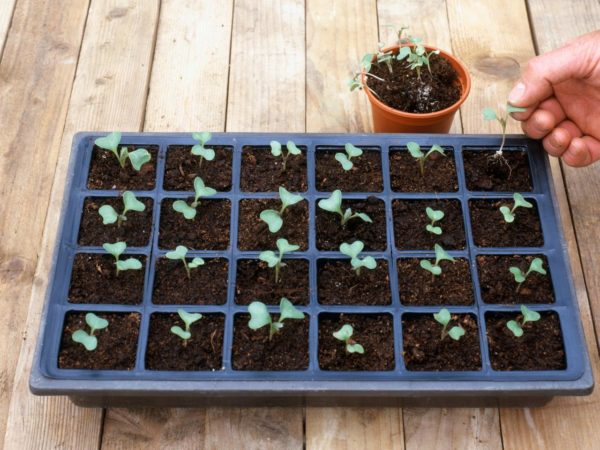 When to sow cabbage for seedlings in 2019 on the moon
When to sow cabbage for seedlings in 2019 on the moon Cauliflower: how to grow large snow-white inflorescences
Cauliflower: how to grow large snow-white inflorescences